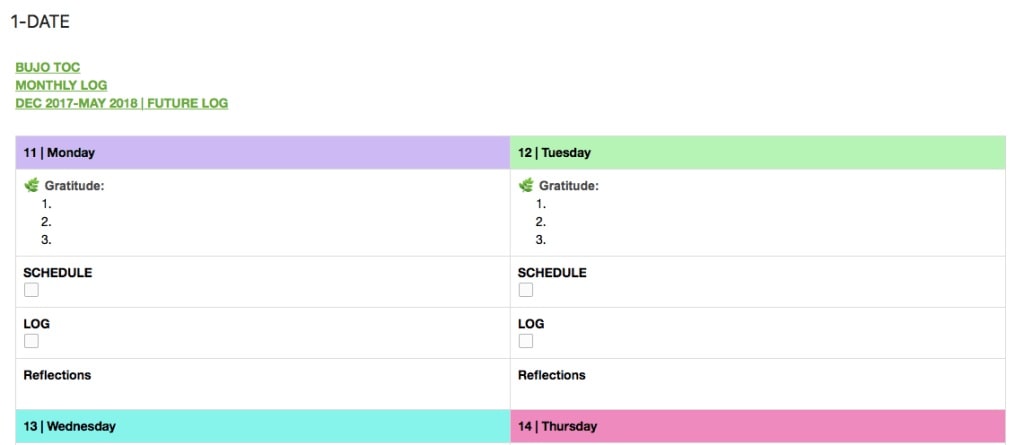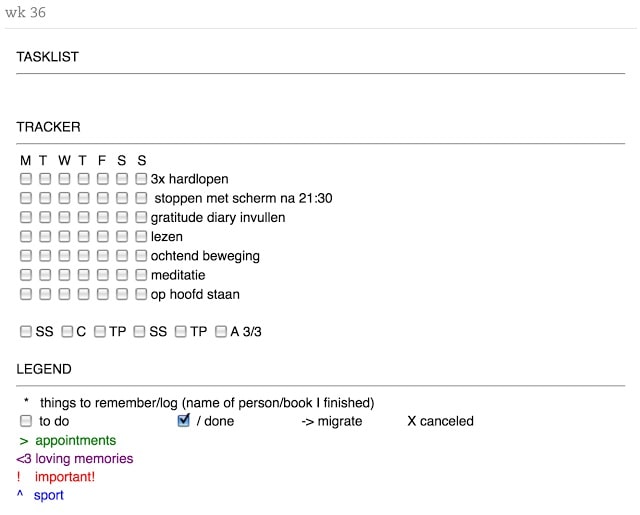


If it needs to be moved to the next week, I put an arrow in it. If it’s in progress, I put a slash through it. When I finish the task, I fill in the square. “I put a square next to every item on my to-do list.
A tracking system for to-dos and goals: Come up with a series of symbols or marks that indicate the status of your to-do items. At the start of the next week (or day or month), you can reference your summary to see what appointments were moved, what items still need to be completed, and what goals were accomplished. This could include a calendar of appointments, a series of to-dos, activity goals, or whatever serves your purpose. Because of this, creating a summary at the beginning of every week (or day or month, depending on how often you plan to use it) will help you keep track of everything you want to accomplish. A weekly (or daily or monthly) summary: No matter how you use your bullet journal, it should be created chronologically. Make a list of the items you’ll be tracking with your bullet journal. An index: The first page of your bullet journal should be the index. Page numbers: Start by numbering your pages for easy reference. The bottom line: You’re more likely to stick with the project if it feels manageable and inspiring-and that will look slightly different for everyone.Īs many uses as there are for the bullet journal, there are 10 times as many ways to set it up, says Shrack, who recommends starting with the following: 
Stock up on colored gel pens, watercolors, stickers-the sky’s the limit, really. But if you want to use your bullet journal as an opportunity to be creative, go for it. When it comes to pens, dual-tips-pens with a bullet tip on one end, a brush on the other-are most versatile. Look for a journal with a lay-flat spine, high-quality paper, a dot grid that’s light and easy on the eyes, and numbered pages. To get started with a bullet journal, you really need only two things: a dot grid notebook and a no-bleed pen. You don’t have to splurge on an arsenal of supplies. Ready to get started? Follow this step-by-step guide for beginners by calligrapher and illustrator Kimberly Shrack. Remember: Much like creating a vision board, there aren’t many hard-and-fast rules to bullet journaling. There’s no need to wait until next January-you can start a bullet journal in the beginning, middle, or end of the year (or anytime in between). Don’t let the time of the year throw you off, either.






 0 kommentar(er)
0 kommentar(er)
